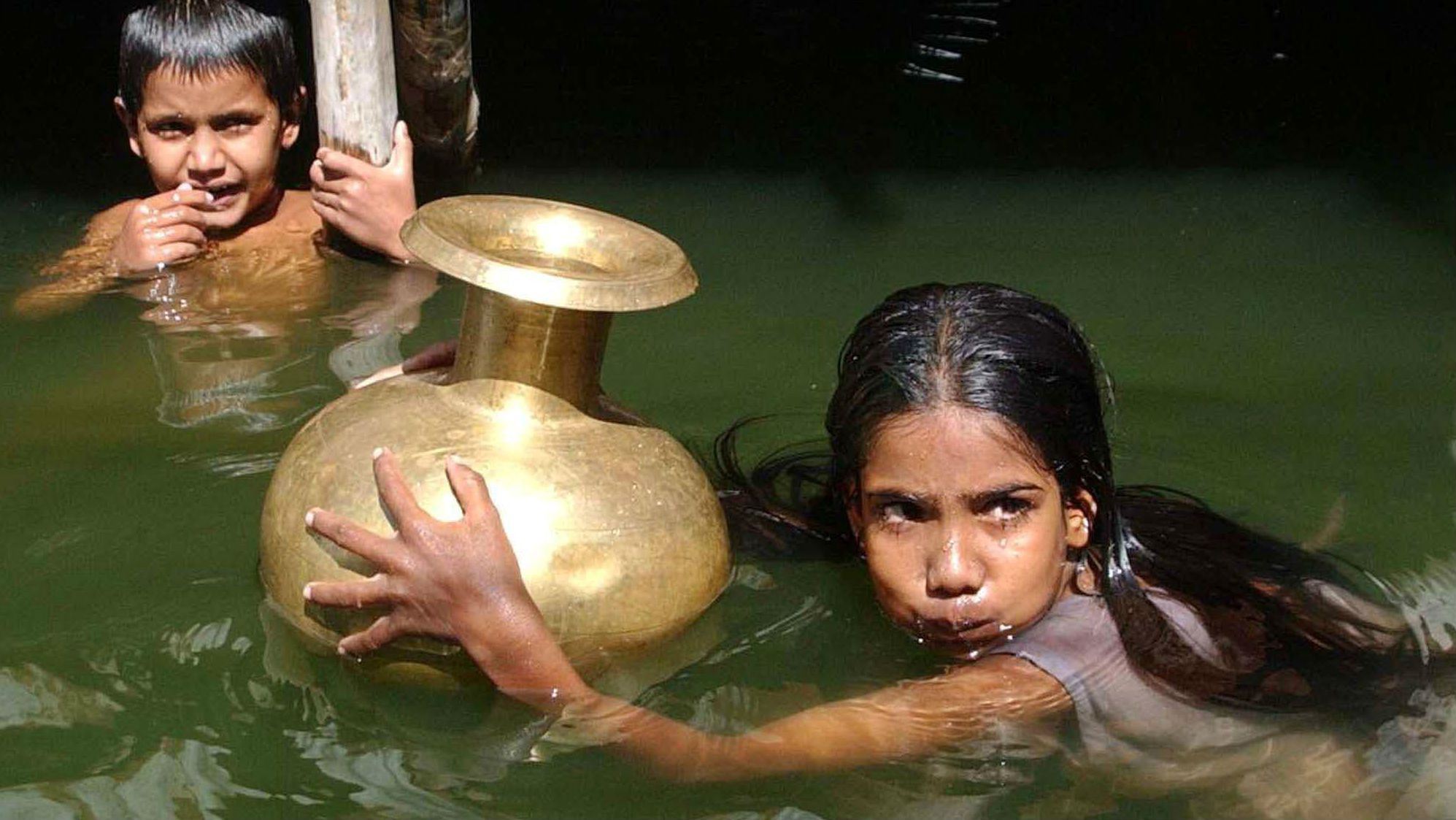Feature: Bangladesh in climate-induced migration mess
by Naim-Ul-Karim
DHAKA, Dec. 6 (NsNewsWire) — Armed with shovels and baskets, they stand around on the sidewalk every morning waiting to be hired, reports Xinhua.
The dozen or so a group of such day-laborers are a common daily sight on the sidewalks of many Dhaka streets.
Most of them are worn-out looking men and women in dirty and tatty clothes that had once been their own a lifetime ago or secondhand.
At about 11:00 a.m. on Thursday, a group of six or seven workers are hanging around the sidewalk of a major road in Dhaka’s Kawran bazar area.
Zamila Khatun, one of them, said for about two hours she had been waiting there to get work with the others but unfortunately luck had not shone down on them.
“I think today we are unlikely to be hired,” said Khatun who looked pale and unwell.
“I never thought in my past life that one day I would have to work as a day laborer and lead such a miserable life here.”
“I don’t want to stay in Dhaka like a street beggar but I have nowhere to go. Who wants to lead a life in a slum?” said Khatun, a middle-aged pretty woman with a downtrodden smile on her face.
Khatun said her husband’s family farm and home in southern Bangladesh’s Satkhira district were obliterated by a powerful cyclone in 2009.
The cyclone Aila formed in the Bay of Bengal battered Bangladesh’s southwestern coast on May 25, 2009, leaving at least 179 people dead and more than 3 million affected in about a dozen districts in coastal areas.
Cyclone Aila was the biggest natural disaster in the delta country after the powerful cyclone Sidr pummeled the country’s southwestern coastal belt on Nov. 15, 2007, leaving more than 4,000 people dead or missing.
Like Khatun, Abdul Gaffar is also a climate change refugee.
Gaffar also told the same painful story that began
with rising sea levels, water scarcity, desertification and other climate-induced changes to the environment.
He said leading life in a coastal Bangladesh district is very difficult now as more sea water is drenching the soil, creating a negative impact on food production.
“The intensity of salinity on soil has created a serious threat to the farmers’ efforts to produce rice paddies and other crops.”
With no solutions in sight to combat nature’s fury, Gaffar said he has relocated his family to Dhaka.
Like Gaffar and Khatun, thousands of people every year have been leaving their ancestral homes due to climate-induced rural livelihood losses, a key cause of consequent rural to urban migration which is now almost a common scenario in developing countries like Bangladesh.
Most of these climate refugees are migrating into different slums in Dhaka and neighboring urban areas.
The country, bordering the Bay of Bengal, has become more vulnerable in recent times to climate change-related problems like cyclones, flooding as its capacity to protect its people and land is feeble.
A new World Bank book titled “Urban Flooding of Greater Dhaka in a Changing Climate: Building Local Resilience to Disaster Risk” and a new report: “Climate and Disaster Resilience of Greater Dhaka Area: A Micro Level Analysis,” launched last month said greater Dhaka needs climate-smart policies and higher investment to improve its resilience to intense rainfall and to prepare for climate change.
“A mega city like Dhaka needs smart investments to meet the demands of a growing population and rapid urbanization in a changing climate. Mainstreaming disaster risk reduction and climate change adaptations in planning will help the city improve service delivery and become truly a growth center,” said Christine Kimes, acting country head of the World Bank Bangladesh.
Experts say hundreds of millions of people worldwide will be forced to leave their homes and migrate elsewhere by 2050. Of those, they said, some 30 million climate change refugees are expected to be in Bangladesh, likely the largest number from one place.
Mujibul Haque Munir, policy research coordinator of Equitybd, a platform of right based civil society organizations in Bangladesh, said, about 70 percent of slum dwellers in Bangladesh’s major towns and cities including Dhaka are climate induced migrants.
He further said dozens of Bangladesh’s coastal districts recorded their highest migration in recent years as extreme weather, floods and droughts forced more people to flee their homes.
Qumrul Islam Chowdhury, chairman of the Forum of Environment Journalist Bangladesh (FEJB), said climate induced calamities have severely affected rural Bangladesh’s poor people.
They face more severe repercussions from some hazards than other types of migrants because of their poverty.
Against this backdrop, he said there is a dire need for local and international mechanisms now instead of later to support climate induced economic and non-economic losses and their victims.
He stressed the need for a legally binding Paris Protocol which is indispensable for survival for most vulnerable countries’ survival.
“I hope all the major parties including the United States and China will play key roles in the fight against climate change,” said Chowdhury, also general secretary of the National Press Club, the country’s most widely respected professional body for journalists.
Echoing almost a similar view, Jasim Katabi, director general of local development organization Green Belt Trust, said there is a need for more specific programs for rehabilitation and adaptation of climate victims in their specific coastal Bangladeshi districts.
“Development partners need to provide more support for such rehabilitation and adaption programs for climate victims,” he said, while expressing the hope that leading countries could finally reach a consensus on the key issues in Paris.
Munir of Equitybd further said “We are so far upset from statements of Obama and Putin.”
“We want a legally binding agreement and compensation for victims.”
